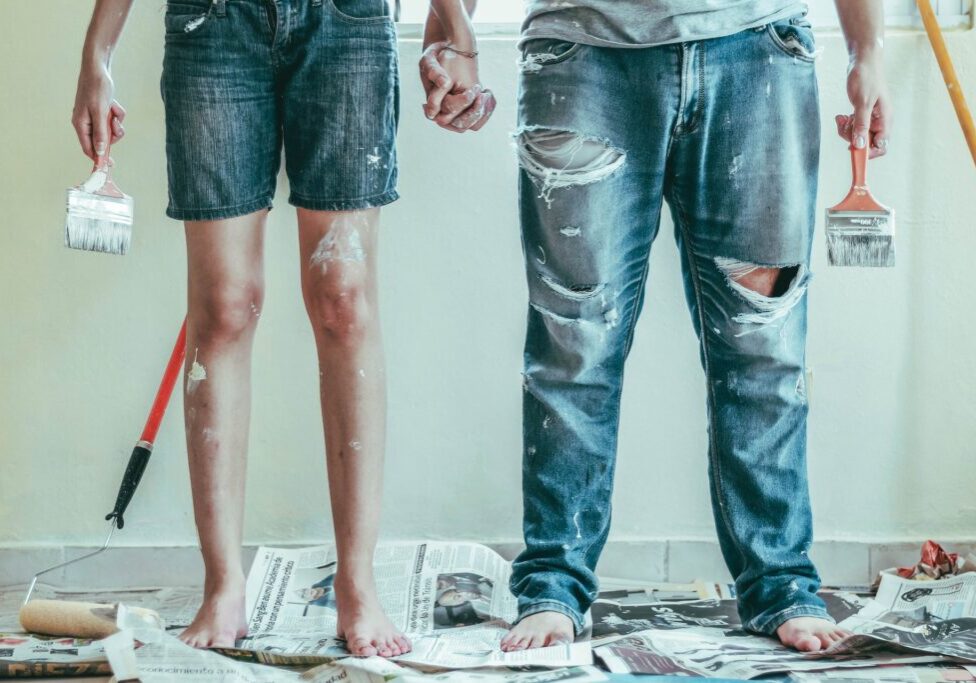How To Clean Mold In Basements

If you have mold in your basement, these steps will guide you to do it safely and correctly. But if you’re ever unsure, feel free to consult with a professional mold remediation company.
If you need to learn how to clean mold in basements, you’ve come to the right place.
When you own a home with a basement, you’ll need to be on the lookout for any indication of a mold problem.
Unfortunately, mold growth in basements is a common problem due to various factors such as moisture, poor ventilation, and inadequate insulation. If left unattended, mold can cause serious health issues and structural damage, which can decrease the value of your property.
The good news is that once you know what to look for, you can take preventative measures to stop mold’s spread or ongoing growth in your basement.

Understanding Mold in Basements
Types of Mold
Mold, as you may know, is a fungus that can grow in damp and humid environments. There are a few types of mold that can grow in basements, including:
- Cladosporium: This mold is commonly found in damp and dark areas and is one of the most frequently found in homes. It can cause respiratory problems and allergies.
- Aspergillus: This mold can grow on your basement walls, ceilings, and floors. It can cause respiratory problems, allergies, and infections.
- Stachybotrys: This type of mold is commonly known as black mold and is another common type found in residential homes. It can grow on wood, paper, and other organic materials. It can cause respiratory problems, allergies, and infections.
Causes of Mold Growth
Once you understand how mold can grow in your basement, you’ll be better equipped to look out for the problem and remedy it so that it does not become an ongoing problem that you have to deal with.
The first reason mold can grow is if you have a moisture problem in your basement. This can include excess humidity, water damage not adequately cleaned up, or water leaks that have gone undetected or ignored. High moisture levels create a damp environment that is ideal for mold growth.
The second most common reason for mold growth in basements is improper ventilation. Having moisture in your home is a given, but if that moisture isn’t circulated or properly vented out of your home, it becomes trapped, leading to mold growth.
It is crucial to address the causes of mold growth to prevent it from recurring. This may involve fixing water leaks, improving ventilation, and reducing humidity.
Before you do any mold cleanup in your home, you must address the underlying cause of the mold growth to prevent future mold infestations and ensure a healthy living environment for your family.

How To Spot Mold In Your Basement
Musty Odor
Mold often produces a distinct musty smell. So, if you notice an unusual odor in your basement, especially if it’s damp or humid, it could indicate mold growth.
Visual Clues
Inspect your basement for visible signs of mold, including fuzzy, discolored patches on walls, ceilings, floors, or corners. Also, watch for green, black, brown, or white spots, as this would also classify as visible mold.
Water Stains
Look for water stains on walls and ceilings, as these can be indicators of water infiltration and potential mold growth.
Condensation
Excessive condensation on windows, pipes, or walls can create a conducive environment for mold growth. Regularly check for condensation, especially in areas with poor ventilation.
Allergic Reactions
If you or any family member experiences unexplained allergies, such as a runny nose, skin irritation, etc., respiratory issues, or other health problems when spending time in the basement, mold could be the culprit.
High Humidity Levels
High humidity or consistent humid conditions encourages mold growth. You can invest in a hygrometer to monitor humidity levels, which should ideally be below 50%.
Now, let’s look at how to clean mold in basements safely and effectively.

Preparation Before Cleaning
Before starting the cleaning process, it is important to take some necessary precautions to ensure safety and efficiency. This section will cover the recommended safety measures and tools you should use to clean mold in your home’s basement.
Safety Measures
Mold can cause allergic reactions, irritations, and in some cases, extreme health risks. So, it is of the utmost importance that you take safety measures to avoid any direct contact with mold.
Here are some things you can do when cleaning moldy areas in your basement.
- Wear protective clothing and gear such as rubber gloves, a face mask, and eye protection.
- Ensure proper ventilation by opening nearby windows and doors. Doing this will help to reduce the concentration of mold spores in the air while you’re cleaning.
- Avoid using bleach on porous surfaces or materials, such as wood. Furthermore, if you use a bleach solution to clean mold, make sure it does not get mixed with other cleaning solutions.
Cleaning Tools & Solutions
Here are some of the required cleaning tools for basement mold removal.
- HEPA vacuum: HEPA vacuums are high-efficiency vacuum cleaners that can trap small particles such as mold spores.
- Scrub brush: You can use a scrub brush to scrub the mold off hard surfaces such as walls, floors, and ceilings.
- Cleaning solution: A cleaning solution such as vinegar, borax, or hydrogen peroxide can remove mold and disinfect the area. Consider mixing the cleaning solution in a spray bottle so you can spray the cleaning solution directly onto the mold.
- Plastic bags: Finally, use plastic bags to dispose of contaminated materials such as clothing, rags, and other items that have come into contact with mold.

Step-by-Step Mold Cleaning Process
Identifying Mold Spots
Before starting the cleaning process, it is important to identify all mold spots and any affected basement surfaces that need to be cleaned. Keep in mind that mold can grow on any surface, including:
- concrete walls;
- drywall;
- ceiling tiles;
- carpet;
- linoleum;
- and so on.
Using the tips shared above on what to look out for, identify areas with signs of mold growth.
Applying Cleaning Solution
Once you’ve identified the areas in your basement with mold, the first step is to apply the cleaning solution.
There are several effective solutions available, such as vinegar or hydrogen peroxide. Some experts agree you can even use tea tree oil to remove mold effectively.
Whatever cleaning solution you choose, apply it to the affected areas and let it sit for at least 10-15 minutes.
Follow the manufacturer’s instructions and wear protective gear such as gloves and a mask to keep yourself safe during mold removal.
Scrubbing and Rinsing
After the cleaning solution has had time to work, it’s time to scrub the mold spots with a stiff-bristled brush. Doing this will help remove any remaining mold spores.
Then, rinse the area thoroughly with water and repeat the process if necessary.
Drying the Area
Once you’ve removed the mold, dry the area thoroughly to prevent future growth. To do this, you can use fans or dehumidifiers to help circulate the air and remove excess moisture.
Once dry, it is a good idea to go through the entire area with a HEPA vacuum to remove all basement spores and improve air quality.

Preventing Future Mold Growth
Once you’ve cleaned your basement, you’ll want to maintain the basement areas to prevent future mold growth. Here are some ways you can do that.
Ensure Proper Ventilation
If you continue to have issues with humidity in your basement, having a professional look at your ventilation system might be a good idea. After all, you shouldn’t have to open windows 24/7 to maintain proper moisture levels in your home.
Regular Cleaning
Another effective way to prevent recurring mold growth is to clean your basement regularly. While you can do this as often as you’d like, it is recommended to do it at least once per month.
Take the time to remove dirt or debris contributing to mold growth. Also, wipe down your walls, floors, and other surfaces with a damp cloth or sponge.
Use of Mold Resistant Products
Using mold-resistant products is another effective way to prevent mold growth in basements. Mold-resistant drywall, paint, and insulation are available at your local hardware store and can be used during basement renovations or repairs. These products resist moisture and prevent mold growth, providing added protection against mold.

When to Call a Professional
If the mold growth in the basement is extensive or covers a large area, it may be best to call a professional mold remediation company. A professional can safely and effectively remove the mold and prevent it from spreading further.
A professional mold remediation company can also identify the source of mold growth and provide recommendations for preventing future growth.
Of course, you want to make sure you work with a reputable and experienced mold remediation company. Look at their reviews and confirm they are a licensed business.
Now that you know how to clean mold from basements safely, it’s time to inspect your basement. Follow the tips outlined at the beginning of this article to identify if your basements have mold.
If you have mold in your basement, these steps will guide you to do it safely and correctly. But if you’re ever unsure, feel free to consult with a professional mold remediation company.
Check out this list to do proper sump pump maintenance.



